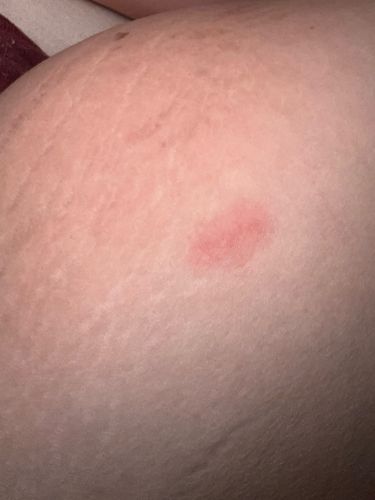Unknown bite mark
Scientific Name: Undetermined
Order & Family: Cannot be determined from a bite mark; depends entirely on the species that caused it. Arthropods capable of biting humans come from various orders and families, including but not limited to Diptera (mosquitoes, flies), Siphonaptera (fleas), Phthiraptera (lice), Hemiptera (bed bugs, assassin bugs), Hymenoptera (bees, wasps, ants), Araneae (spiders), and Acari (mites, ticks).
Size: Cannot be determined from a bite mark. The size of the organism that caused the bite would vary greatly depending on the species, from microscopic mites to larger spiders or insects.

Natural Habitat
Cannot be determined from a bite mark; depends entirely on the species that caused it. Habitats vary from aquatic to terrestrial, including human dwellings, forests, grasslands, and deserts.
Diet & Feeding
Cannot be determined from a bite mark; depends entirely on the species that caused it. Biting insects/arachnids can be parasitic (feeding on blood/hosts), predatory, or herbivorous, with many variations in between.
Behavior Patterns
Given the image shows a bite mark, it's impossible to discern the behavior patterns of the organism that caused it without knowing what species is involved. Bite patterns alone are often not sufficient for identification, as reactions can vary widely among individuals and species. Generally, biting insects or arachnids are primarily active when seeking a blood meal or in self-defense. Their activity might be diurnal or nocturnal depending on the species.
Risks & Benefits
The main risk from a bite mark is localized irritation, itching, and potential secondary infection from scratching. Depending on the species, there can be risks of allergic reactions (ranging from mild to severe/anaphylaxis), and transmission of diseases (e.g., Lyme disease from ticks, West Nile virus from mosquitoes, Chagas disease from kissing bugs). There are no direct benefits associated with the bite mark itself. The organisms that cause bites may have ecological benefits (e.g., pollination, pest control, decomposition, food source for other animals), but this is not related to their biting behavior towards humans.
Identified on: 9/4/2025